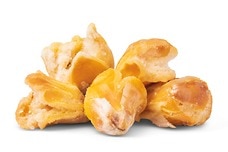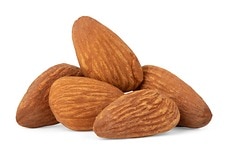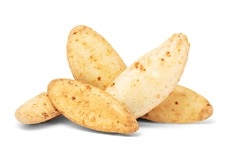Find Your Ratio: Diet vs. Exercise for Weight Loss
According to the National Health and Nutrition Survey, more than 2 out of every 3 American adults are considered to be overweight or obese (National Institute of Diabetes and Digestive and Kidney Diseases, 2012). An unhealthy weight is a growing problem among children and adolescents as well, with approximately one-third of kids aged 6 to 19 classified as obese or overweight.
These figures mean that many of us are a few (or more!) pounds away from a healthy weight. However, figuring out the best way to drop those excess pounds is a perennial problem. With the explosion of fad diet plans, discussions of “good” versus “bad” foods, and pseudoscientific rationales for weight loss programs, it can be tough to cut through the noise to find out what really works to help you lose weight. Understanding the physiology of weight loss is a good place to start, as it can help you learn what diet and exercise choices work to promote healthy weight loss.
Understanding the Physiology of Weight Loss
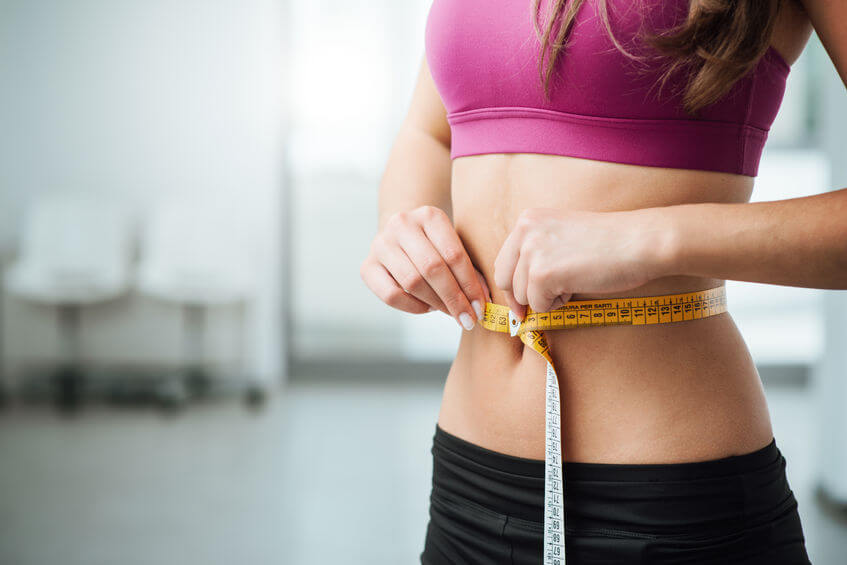
Every cell in your body is constantly using energy. Even when you aren’t moving, your heart is pumping, your respiratory system keeps you breathing, your muscles are maintaining a baseline level of postural tension, and your digestive system is working. All of these bodily activities require energy, representing your resting energy expenditure. This resting energy expenditure accounts for 50 to 70% of the calories you eat every day (University of Michigan Health Service, n.d.). Each of us has a unique resting energy expenditure, which is affected by our age, sex, genetic background, and body composition.
Although there are many strategies for weight loss, they all come down to the same formula: calories in versus calories out. To lose weight, your body must burn more calories than you consume through food. Because you cannot change your resting energy expenditure -- after all, your age, sex, and genes are fixed -- you must change your other sources of calories. This means that there are two main strategies for achieving healthy weight loss: reducing the number of calories you eat and increasing the number of calories you burn through exercise (Mayo Clinic, 2015).
Both dietary changes and exercise create a net caloric deficit between the calories you consume and the calories you burn. One pound of body fat is equivalent to 3,500 calories (Mayo Clinic, 2015). This means that to lose one pound per week, you must have a caloric deficit of 500 calories per day. To lose two pounds per week, the highest rate that most doctors consider safe and healthy, you must create a caloric deficit of 1,000 calories per day. Again, both reducing the calories you eat and engaging in physical exercise can help you achieve this overall caloric deficit.
Assess Your Resting Metabolic Rate to Create a Weight Loss Plan
Before jumping into a new diet routine, it is important to take a moment to assess your overall health and nutritional needs. Each person has unique nutritional requirements based on personal factors, body composition, and lifestyle choices. The most accurate way to determine your resting metabolic rate, the number of calories your body burns at rest, is to use calorimetry (Kelly, 2015). This is based on respiration and requires use of a special device to measure your resting metabolic rate. A handier route for most people is to use an online calculator to estimate your resting metabolic rate. These calculators typically ask for your age, sex, weight, and height. This can give you a good estimate of the number of calories your body burns each day. You can then use this to make a weight loss plan given your nutritional needs.
Nutrition and Weight Loss for an Average Adult
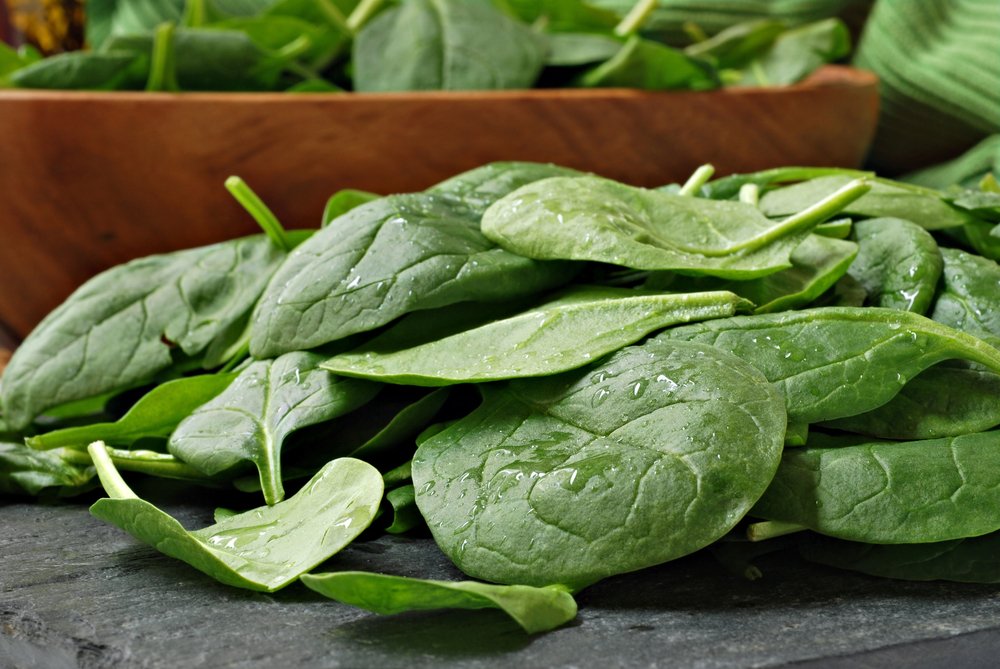
For example, perhaps you are a 30 year old woman who is 5’9” and weighs 175 pounds. An online calculator estimates that your resting metabolic rate is 1,900 calories per day (Bodybuilding.com, 2015). To lose pound per week, you want a net amount of 1,400 calories daily (creating a 500 calorie deficit). You could achieve this in several ways. While keeping a sedentary lifestyle, you could cut your caloric intake to 1,400 calories daily. However, this would be a rather restricted diet that may cause you to become deficient in important vitamins and minerals. Alternatively, you could eat 2,000 calories per day but would need to burn 600 calories through exercise every day. At this rate, you would have to spend a long time at the gym to meet your caloric goals.
Typically, the healthiest weight loss plan is one that blends dietary changes and exercise. In this hypothetical example, you could cut your caloric intake to a manageable 1,700 calories per day. Exercising could burn an additional 300 calories daily to bring you to your goal.
Nutritional Considerations for Children
Promoting weight loss in children requires a delicate balance, and it is best to talk to your child’s pediatrician for nutrition advice specific to your child. In general, kids have significantly lower caloric needs than adults, given their smaller body size (National Heart, Blood, and Lung Institute, 2010). Thus, considering portion size is important when feeding your child. A portion that looks normal to you may have far more calories than your child actually needs.
It is important for developing children to get plenty of vitamins and minerals to support healthy growth. Thus, eating a varied diet with plenty of fresh fruits and vegetables -- and minimal processed foods -- is the best way to achieve a healthy weight for children.
Nutritional Considerations for Athletes
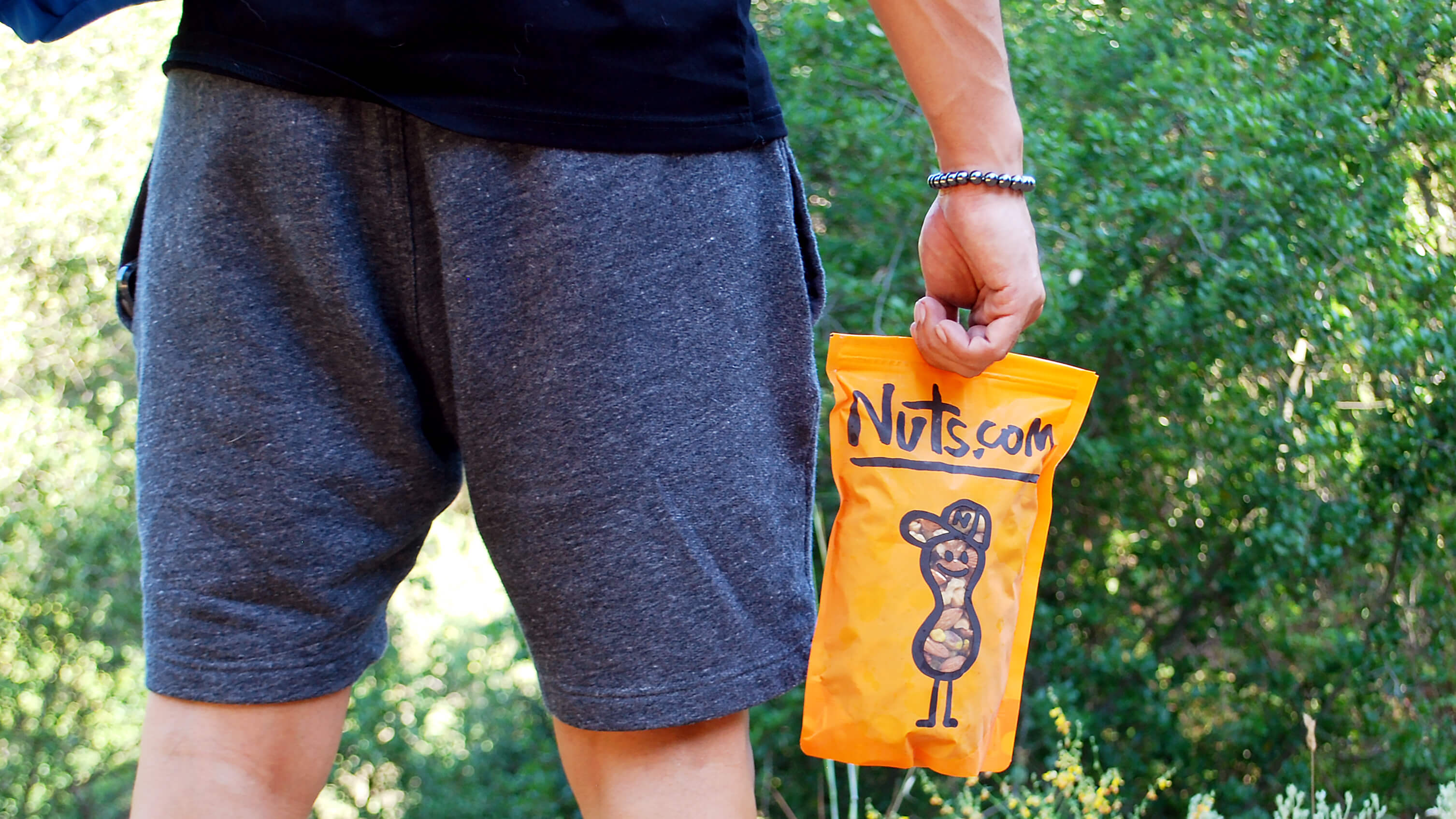
Physical activity also plays a large role when determining your nutritional needs. The more physically active you are, the more calories you need to consume each day (National Heart, Blood, and Lung Institute, 2010). Additionally, athletes often have a different body composition than non-athlete adults. Athletes tend to have a higher ratio of muscle to fat. Because muscle tissue burns more calories than fat, this means that athletes tend to have a higher total calorie requirement (Mayo Clinic, 2014). It is also important to ensure that you get enough carbohydrates and protein to fuel your workouts. This makes pre- and post-workout shakes or snacks critically important for athletes.
Other Medical Considerations
Other chronic medical conditions can also impact your ability to lose weight or to follow a particular diet and exercise plan. For instance, people with diabetes must be aware of the effects of physical exercise on their blood sugar levels. Engaging in high-intensity physical activity could cause blood sugar levels to drop, making it important to have a small snack to prevent a hypoglycemic episode (American Diabetes Association, 2013).
Your medical background may also impact your dietary choices when trying to lose weight. For instance, people with celiac disease or ulcerative colitis have difficulty properly absorbing nutrients from their food. In some cases, celiac disease can actually cause obesity (Thalheimer, 2014). These patients should work carefully with a nutritionist to learn effective weight loss strategies that ensure they still get the vitamins and minerals they need.
Weight Loss Diet: Focus on Whole, Filling Foods
So what foods should you be eating for the optimal weight loss diet? The best diet plans do not eliminate any particular food group but instead focus on achieving a healthy balance of nutrients. This includes getting plenty of complex carbohydrates, lean protein, and healthy fats.
The best way to begin is to cut out heavily processed foods, such as frozen dinners, French fries, chips, soda, and deli meat. Instead, focus on filling your grocery cart with fresh, whole foods. This might require some creativity if you are not used to eating this way, so take small steps to start. Aim to grab one or two new fresh foods every time you go to the store. When purchasing fruits and vegetables, try to make selections across the color spectrum. This ensures that you get a wide variety of vitamins, minerals, and antioxidants that support weight loss and overall health (Garden-Robinson, 2011).
Food cravings are one of the biggest reasons that people fail in their weight loss plans. Restricting your diet excessively can cause you to become very hungry a few hours after a meal, leading to unplanned snacks. This is why complex carbohydrates and lean protein are so important. Eating complex carbohydrates provides your body with a sustained energy source (Mayo Clinic, 2014). Whole grain foods such as quinoa, buckwheat, whole-wheat pasta, brown rice, or barley will help you get the complex carbohydrates you need. The other factor that helps you stave off cravings is protein. Make sure you get protein in every meal and snack. Skinless chicken, turkey, cheese, nonfat milk or yogurt, beans, nuts, and seeds are great options for a source of lean protein.
Exercise for Weight Loss

Exercise is not only great for weight loss, but it also supports good overall health. Both aerobic exercise and strength training are important. Aerobic exercise causes your heart rate to go up, burning calories and fat. Meanwhile, strength training promotes the development of lean muscle, which will increase the number of calories you burn while at rest (Mayo Clinic, 2014).
To ensure you get enough exercise, aim for 150 minutes of moderate-intensity physical activity per week, or 30 minutes five times per week (American College of Sports Medicine, 2011). This could be brisk walking, light jogging, swimming, dancing, or cycling. Also engage in strength training two to three times per week, being sure to work all of your major muscle groups. Joining a fitness group or classes at your gym is a good way to stay motivated for weight loss success.
Recipes to Support a Healthy Weight Loss Plan
The following recipes are well-balanced to provide the nutrients you need in a satiating dish without all of the empty calories. Try a few of these delicious dishes throughout your day to find your favorites! You can find more snacks for healthy weight loss here, or by checking out our article on the 5 best nuts for weight loss!
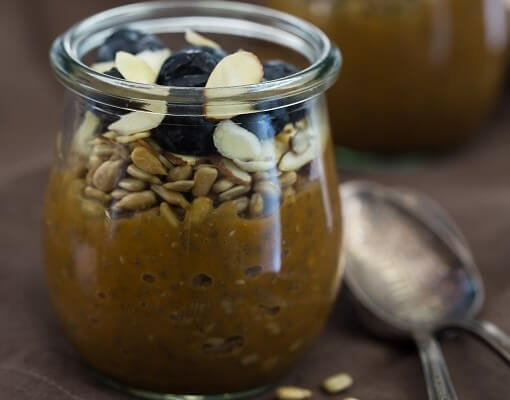
Pumpkin Chia Seed Pudding Recipe
Kickstart your metabolism with a light breakfast that is packed with wholesome, nutritious foods. This pudding contains more than 5 grams of protein and 4 grams of fiber to help keep you full until your first midmorning snack.
Ingredients: Milk, pumpkin puree, chia seeds, maple syrup, pumpkin spice, sunflower seeds, sliced almonds, fresh blueberries.
Total Time: 10 minutes
| Yield: 4 servings
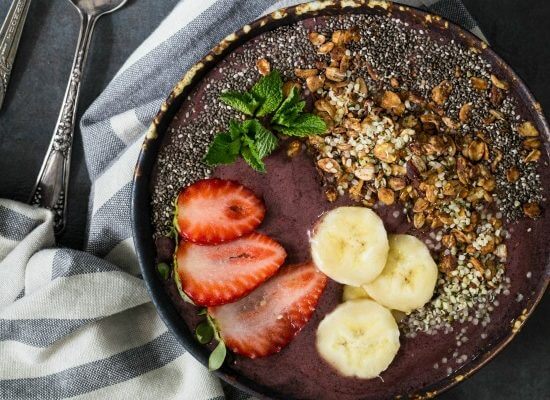
Protein Acai Bowl Recipe
Athletes can start their day off with a berry bowl packed with satiating protein from whey protein powder and almond milk. This dish also includes a blend of vitamins and minerals that help you meet your daily nutritional needs.
Ingredients: Frozen strawberries, almond milk, whey protein powder, acai powder, banana, fresh fruit toppings
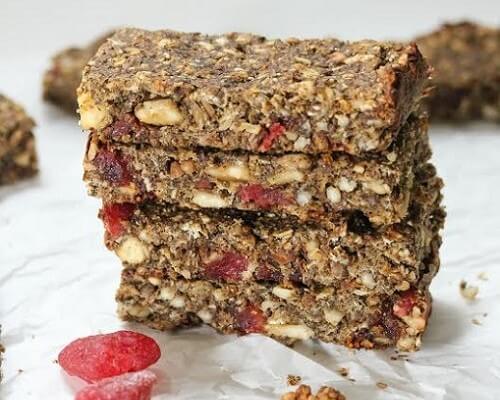
Homemade Granola Bars Recipe {gluten-free}
When you feel your stomach start to growl and know you need a healthy snack to help tide you over, reach for one of these delectable bars. Each treat contains protein, fiber, and complex carbohydrates to keep you energized and satisfied.
Ingredients: Dried mulberries, dried strawberries, raw cashews, organic peanut butter, ripe bananas, raw sunflower seeds, hemp protein powder, gluten-free rolled oats, chia seeds, flaxseed meal.
Total Time: 40 minutes
| Yield: 12 bars
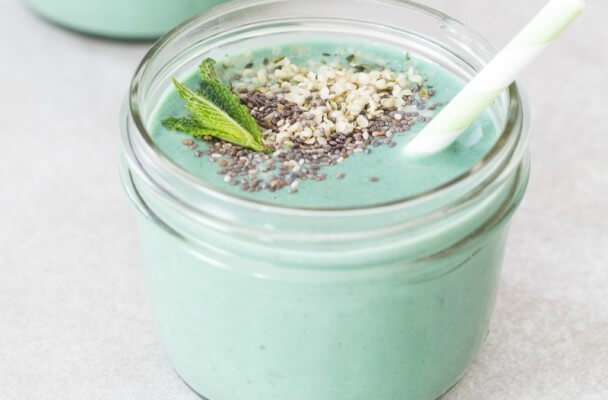
Protein-Packed Detox Smoothie Recipe {vegan}
This smoothie is packed with nutritious superfoods, including both hemp and chia seeds to add protein and fiber that will keep you full. While the smoothie is great for a post-workout refreshment, it can also be used as a meal replacement shake.
Ingredients: Almond milk, frozen banana, spirulina, hemp protein powder (optional), fresh mint, chia seeds, hemp hearts.
Total Time: 5 minutes
| Yield: 2 servings
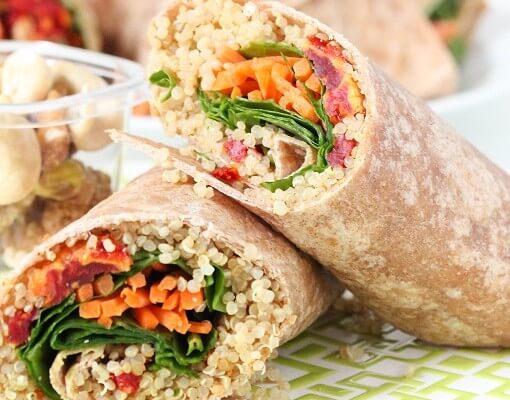
Quinoa Veggie Wrap Recipe {vegan}
A palatable option for lunch, these wraps can also be cut in half to be eaten as a hearty snack between meals. Each wrap combines protein and complex carbohydrates from quinoa and hummus with the vitamins and minerals of fresh veggies.
Ingredients: Tortilla wraps, quinoa, hummus, fresh spinach, sun-tomatoes, shredded carrots.
Total Time: 30 minutes
| Yield: 4 wraps
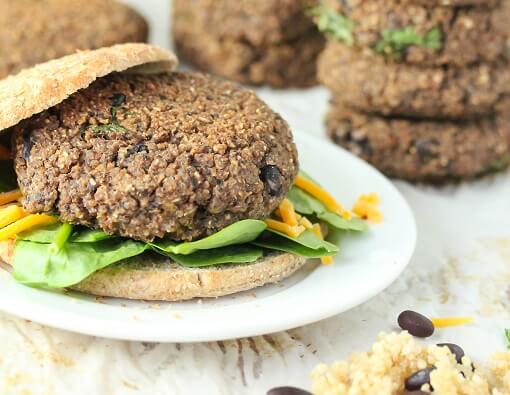
Quinoa Fritters Recipe
Quinoa fritters a flavorful lunch item that offer the energy of complex carbohydrates along with the protein and fiber your body needs. Add your favorite fixings and enjoy this flavorful fritter today!
Ingredients: Quinoa, black beans, gluten-free rolled oats, egg, cumin powder, salt, cilantro.
Total Time: 25 minutes
| Yield: 12 medium-sized fritters
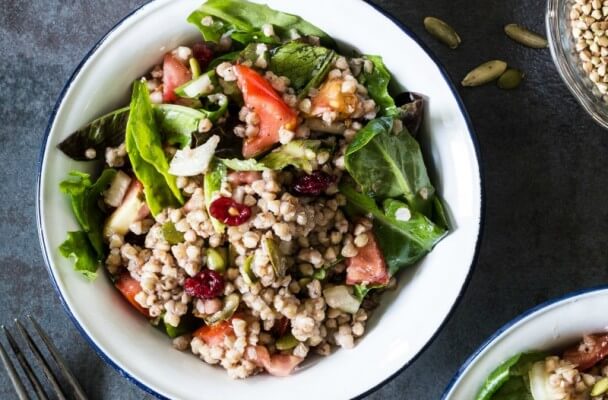
Buckwheat Salad Recipe
This salad will fill you up with the heft of buckwheat, while the surrounding greens serve up the nutrients your body needs. The result is a delightful dish that offers a surprisingly satisfying dinner while you slim down into your desired shape.
Ingredients: Mixed greens, buckwheat, tomatoes, onion, raw pumpkin seeds, dried cranberries, rice wine vinegar, sesame oil, salt, black pepper.
Total Time: 15 minutes
| Yield: 5 servings
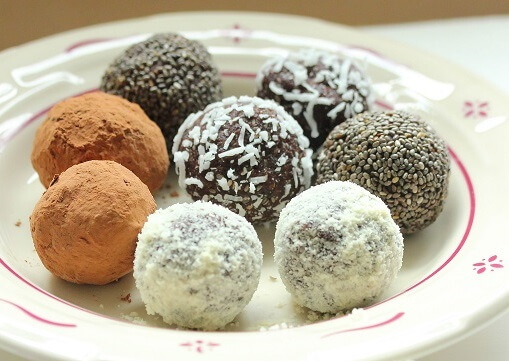
Healthy Vegan Chocolate Truffle Recipe
When the urge to indulge your sweet tooth is too intense to ignore, opt for a healthy treat with these healthy chocolate truffles. Each truffle is less than 100 calories and relies on fruits for the healthier sucrose as its source of sugar.
Ingredients: Jumbo Mejdool dates, almond flour, chia seeds, flaxseed meal, cacao powder, agave or maple syrup, almond milk, unsweetened shredded coconut.
Total Time: 15 minutes
| Yield: 24 truffles
Snacks to Support Healthy Weight Loss
The following snacks were selected due to their inclusion of essential nutrients to support your diet, including protein and fiber to facilitate the feeling of fullness, and contain a relatively small number of calories per serving. For additional snacks to support weight loss goals, check out our page on low-calorie snacks.
Healthy Eating
- Healthy Snacks
- Healthy Meals
- Healthy Recipes
- Sports Nutrition
- Nutrition and Special Diets
- 21 Day Fix
- 5 Popular Diet Similarities
- Alkaline Diet
- Anti-Inflammatory Diet
- Calorie Counting
- Carb Cycling Diet
- Celiac Disease
- Cholesterol
- Clean Eating
- Crohn's Disease
- DASH Diet
- Detox Diet
- Diabetes
- Diabetes Diet
- Diet Pill Dangers
- Fat Burning Foods
- Gluten-free Diet
- Glycemic Index
- Heart Health
- High Blood Pressure Diet
- High Fiber Foods
- How to Eat Healthy
- How to Lower Blood Pressure
- Hypertension
- IBS Diet
- Ketogenic Diet
- Liquid Diet
- Low GI Foods
- Low-Carb Diet and Foods
- Low-Fat High-Carb Diet
- Mediterranean Diet
- Mediterranean Diet Foods
- Military Diet
- Nutrition Labels Explained
- Paleo Diet
- Raw Food Diet
- Superfoods
- Sustainable Weight Loss
- Thrive Diet
- Vegan Diet
- Vegetarian Diet
- Weight Loss Shakes
- Whole30
- Vitamins, Minerals & Nutrients

